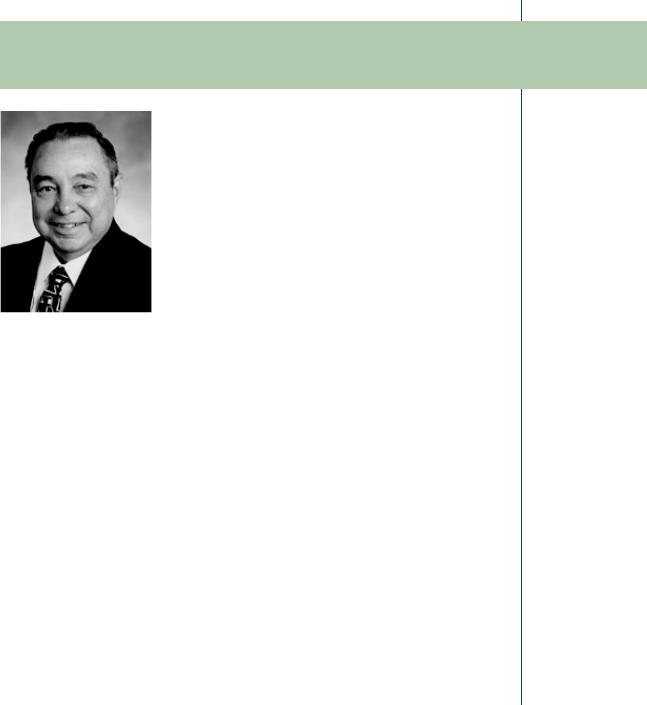
Signal Processing of Random Physiological Signals - Charles S. Lessard
.pdf
221
Biography
CHARLES S. LESSARD
Charles S. Lessard, Ph.D., Lt Colonel, United States Air Force (Retired), is an Associate Professor in the Department of Biomedical Engineering at Texas A&M University. His areas of specialization include Physiological Signal Processing, Design of Virtual Medical Instrumentation, Noninvasive Physiological Measurements, Vital Signs, Nystagmus, Sleep & Performance Decrement, Spatial Disorientation, G-induced Loss of Consciousness (G-LOC), and Neural Network Analysis. Dr. Lessard received a B.S. in Electrical Engineering from Texas A&M (1958) a M.S. from the U.S. Air Force Institute of Technology (1965), and his Ph.D. from Marquette University (1972).
As an officer in the U.S. Air Force, Lessard was a pilot of F86L Interceptors and B52G Strategic Bombers. He also served as Research Scientist and Chief of Biomedical Engineering Research for the Aerospace Medical Division of the School of Aerospace Medicine, at Brooks Air Force Base, Texas. In this capacity he planned and directed research efforts in biomedical projects associated with the Manned Orbiting Laboratory Program (MOL), developed medical instrumentation (EEG Analyzer), conducted research on computer on the analysis of sleep brainwaves and cardiac signals, and the

222 BIOGRAPHY
effects of zero-gravity (0-G) on the cardiac response during valsalva maneuvers. At the U.S. Air Force Medical Research Laboratories, Wright-Patterson AFB, Lessard served with Biocybernetics Wing Engineering and worked on neural networks, self-organizing controls (SOC), and remotely piloted vehicles. He was the Field Office Director, Program Manager, with the Electronics Systems Division of the Air Force Systems Command during the installation and testing of Spain’s Automated Air Defense System as a part of the Treaty of Friendship and Cooperation between the US and Spain. Dr. Lessard retired from the U.S. Air Force in 1981 after serving as the Deputy Director of the Bioengineering and Biodynamic Division at AMRL- Wright-Patterson Air Force Base. He began his academic career with Texas A&M University in 1981.
Charles Lessard was a Senior Scientist for Veridian Inc. at Brooks Air Force Base and lead scientist for KRUG Life Sciences, Inc. in the psychological and neuropsychological manifestations of spatial orientation, mechanisms of spatial orientation in flight, and countermeasures against spatial disorientation. Additionally, he was responsible for developing and conducting research in spatial disorientation and high acceleration (Gzforces) induced loss of consciousness (G-LOC). He was a science and engineering expert for the USAF, Air Force Research Laboratories and Wyle Laboratories, Inc. on joint US military (Air Force and Navy) G-LOC studies performing analysis of physiological data, i.e., Auditory Evoked Responses (AER), electroencephalograms (EEG), electrocardiograms (ECG), electro-oculograms (EOG), Oxygen saturation (SaO2), and Tracking Performance data.
